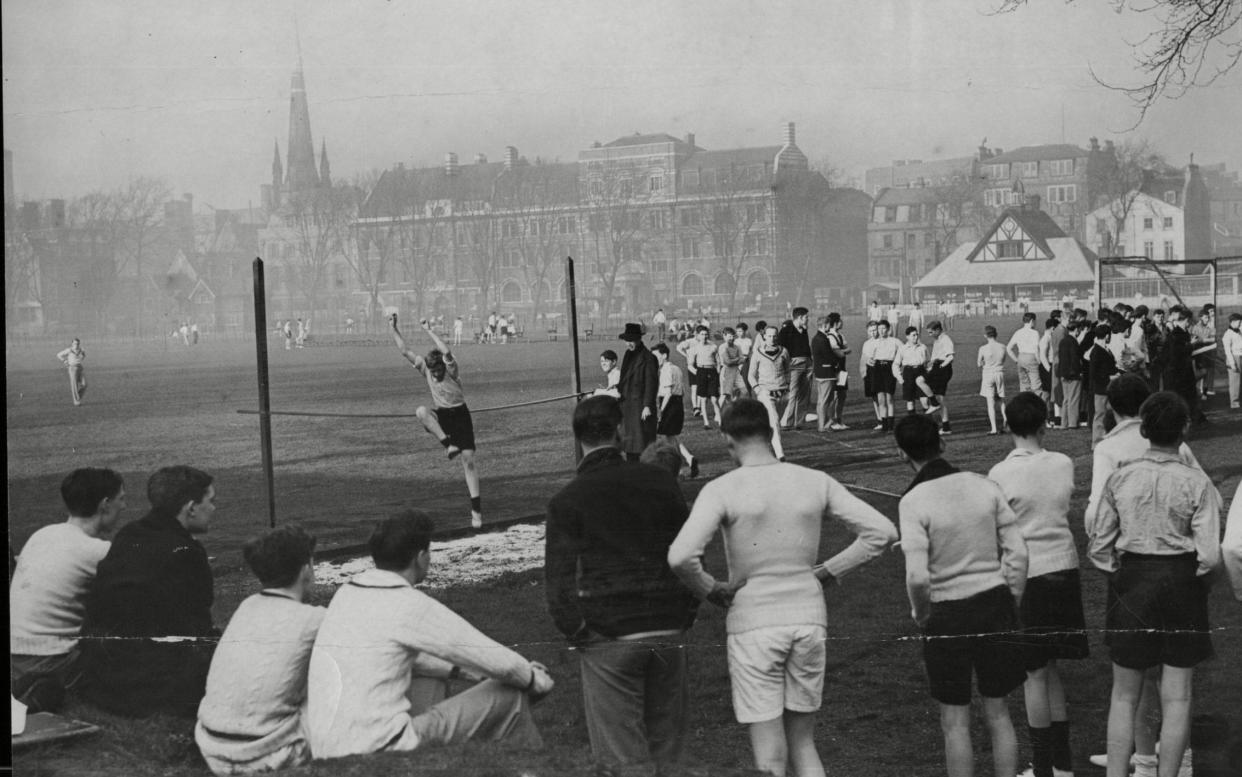Too few want to admit that boys and girls are different

It’s Hello, Mrs Chips! Westminster School is preparing to go fully co-ed – taking girls throughout the school by 2030. This reflects an overwhelming trend away from single-sex, and particularly all-male, education. Now only 12 per cent of state schools remain single-sex; and less than half of all independent ones. In both the private and state sector, this has been part of a startling shift away from single-sex as the default.
Unlike many provincial private schools, forced to take in girls to combat falling rolls and boost academic standards, successful, sought-after Westminster surely has no immediate need to go mixed. So the decision suggests a cultural choice unrelated to economic or academic considerations.
There will doubtless be fulminations by old boys in letters’ pages, parental chatter on WhatsApp groups, and praise from progressives, but the question of how we teach children has ramifications beyond Westminster’s hallowed halls. Is the decline of single-sex education, as Nigel Molesworth might have said, “A Good Thing?”
Far from being a gung-ho throwback to the days of St Custard’s, there are strong modern-day arguments for single-sex education; and not just for Lord Snooty and the top-hatted elite. Teenagers have never been more pressured and poked by forces beyond their control; from hyper-sexualisation to ubiquitous social media. During that frenetic transition into adulthood, there are virtues to any environments offering shelter from the outside world.
At my all-girls independent school, we sometimes railed against the strictures and the absence of boys. But looking back, I see much to recommend. It was fine to turn up with messy hair or unshaved legs, provided your homework was finished. During that vexed time of the month, you could take a hot-water bottle into lessons, moaning in sympathy with others in the same boat. But there was also something freeing and oddly genderfluid about the oestrogen-heavy environment; we rarely felt self-conscious speaking up in class or returning flushed and sweaty from netball. We vigorously pursued our interests with no concept of “boy” or “girl” subjects.
Back then, technology was primitive; our flip phones just about managed text messaging; Instagram and TikTok didn’t exist. We argued about Page Three and “lads’ mags” like Nuts. For all the drawbacks of Noughties lad culture, much of it now looks quaint compared with today’s hidden iceberg of internet pornography. For girls, single-sex education may offer some additional respite from all that; the chance to enjoy a proper childhood for longer.
Many boys will find all-male environments similarly liberating. Though physical activity is important for both sexes, male pupils need it perhaps even more than girls. So too discipline. Teachers, one suspects, can be firm on boys in a way not permitted in a mixed environment. There is that same possibility of learning without being so constantly aware of the opposite sex. Not that single-sex education means monasticism. It is possible to keep classrooms segregated but retain plenty of opportunity to mix in choirs, after-school clubs and so on.
Boys also differ markedly from girls in how they learn and engage at school; even their brains develop differently. Research has revealed that the prefrontal cortex, the area of the brain involved in decision-making, planning and impulse-control, matures about two years later for boys. Yet much educational planning ignores these findings, including on class formulation and learning spaces – areas which could be more easily adapted in all-male settings. Single-sex education is widely viewed as anachronistic – not a possible solution to present-day issues such as the growing gender attainment gap.
Effective schooling has always been a case of horses for courses. Children are so influenced by their parents and home lives that definitive attempts to say This Always Works are fatuous. But one thing is undeniable; whittling away choice is where problems begin. The uncompromising idea of “comprehensive schooling” has been diluted over time as we’ve realised that different people have different needs. Consider how the Blairite push to send 50 per cent of leavers to university has backfired. Ironically, Euan Blair amassed a fortune by undercutting his father’s legacy, establishing a successful company offering debt-free degrees for apprentices as they learn on the job. One size clearly doesn’t fit all, and that’s as true in kindergarten as college.
What is needed is a mixed ecology; academies, free and faith schools, state and private. In short, options for parents – including single-sex education. This could be single-sex schools, or even mixed schools with single-sex classrooms, as is common in Iceland, where boys and girls are often separated from the age of two.
Single-sex education should not be the preserve of the independent sector. With many private schools now catering more for the international super-rich than their old middle-class clientele, majoring in Olympic-size swimming pools and the like, such conversations are academic in any case. Many of us who were lucky enough to be educated privately could not afford to repeat the experience for our own children. But while such “frills” are impossible to roll out everywhere; other historical aspects of private learning should not be. Single-sex education won’t suit everyone; but for many it will provide the springboard for a truly rounded education. Let a thousand flowers bloom.

